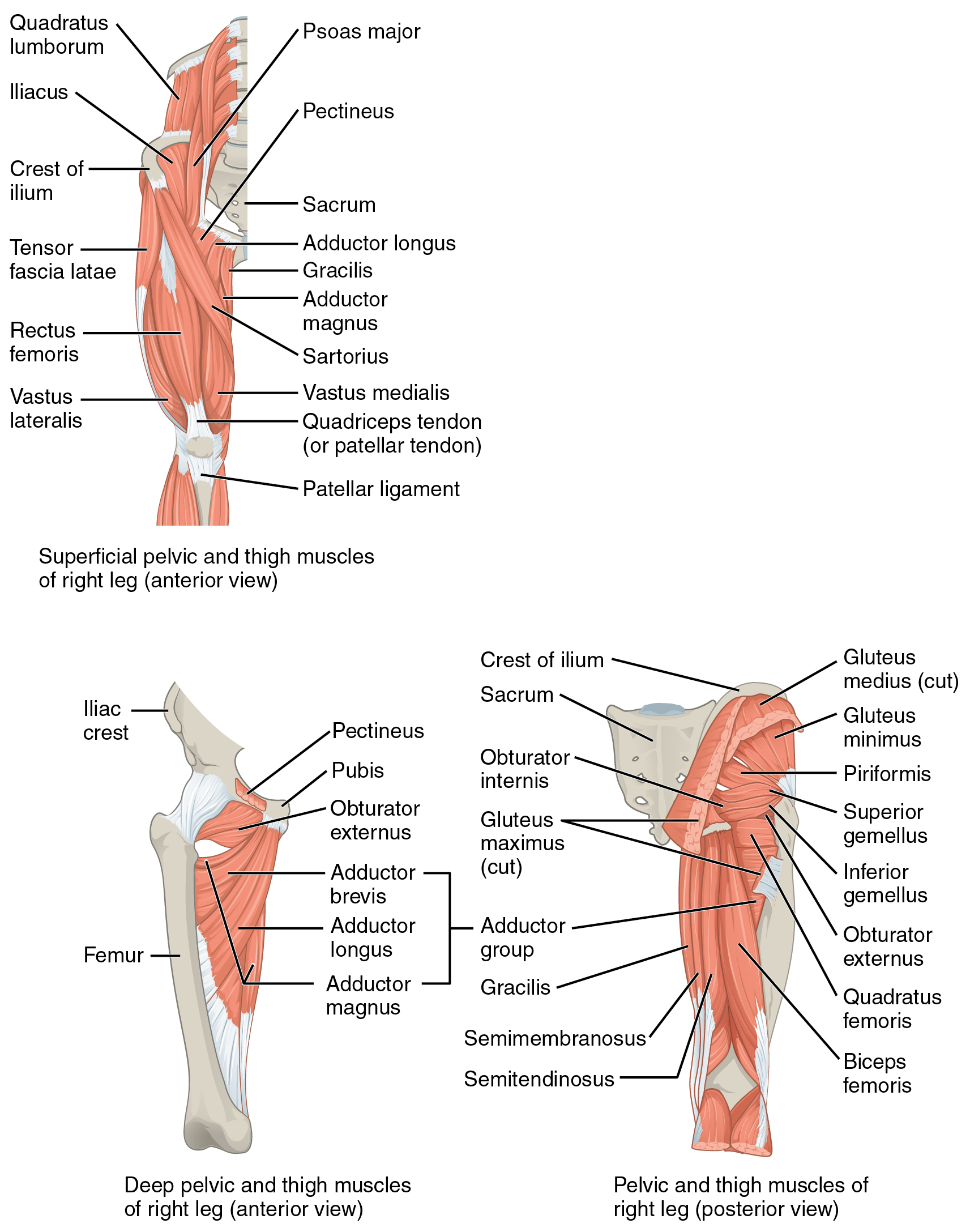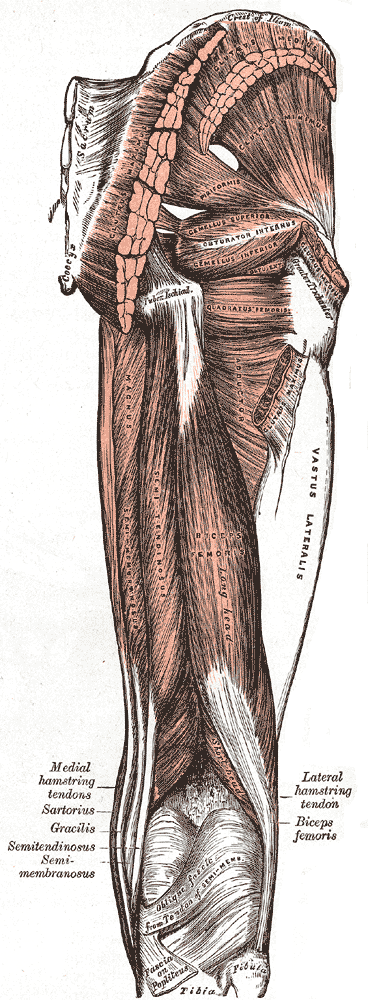Quadratus Femoris
| Muscle | Origin | Insertion | Innervation | Action |
|---|---|---|---|---|
| Quadratus femoris | Lateral border of Ischial tuberosity | Intertrochanteric crest | Nerve to Quadratus femoris L5 - S1 |
Hip: ER |
Origin
Lateral border of the ischial tuberosity5
Insertion
Intertrochanteric crest of the femur5
Innervation
Action
Hip: External rotation5
Note
The QF may extend or flex the hip depending on its position6.
Palpation
- Position the patient in prone7.
- locate:7.
- Bisect these two landmarks and place your fingerpads here7.
- Press firmly through the more superficial Gluteus maximus muscle belly7.
- Strum vertically over the QF muscle belly7.
Passive tension
You can passively tense and slack the quadratus femoris by flexing the knee to 90° then moving between internal rotation (tension) to external rotation (slack), which should cause the quadratus femoris to palpably increase in tension7.
Exercises
- FAddER Contract-Relax
- Therapist assisted
- Self-Stretch
References
1.
Betts JG, Blaker W. Openstax Anatomy and Physiology. 2nd ed. OpenStax; 2022. https://openstax.org/details/books/anatomy-and-physiology-2e/?Book%20details
2.
Gray H. Anatomy of the Human Body. 20th ed. (Lewis WH, ed.). Lea & Febiger; 1918. https://www.bartleby.com/107/
3.
Donnelly JM, Simons DG, eds. Travell, Simons & Simons’ Myofascial Pain and Dysfunction: The Trigger Point Manual. Third edition. Wolters Kluwer Health; 2019.
4.
Neumann DA, Kelly ER, Kiefer CL, Martens K, Grosz CM. Kinesiology of the Musculoskeletal System: Foundations for Rehabilitation. 3rd ed. Elsevier; 2017.
5.
Gilroy AM, MacPherson BR, Wikenheiser JC, Voll MM, Wesker K, Schünke M, eds. Atlas of Anatomy. 4th ed. Thieme; 2020.
6.
Jones B. B Project Foundations. b Project; 2025.
7.
Biel A. Trail Guide to the Body: A Hands-on Guide to Locating Muscles, Bones, and More. 6th ed. Books of Discovery; 2019.
Citation
For attribution, please cite this work as:
Yomogida N, Kerstein C. Quadratus Femoris. https://yomokerst.com/The
Archive/Anatomy/Skeletal Muscles/Lower limb muscles/Gluteal
Muscles/quadratus_femoris.html

